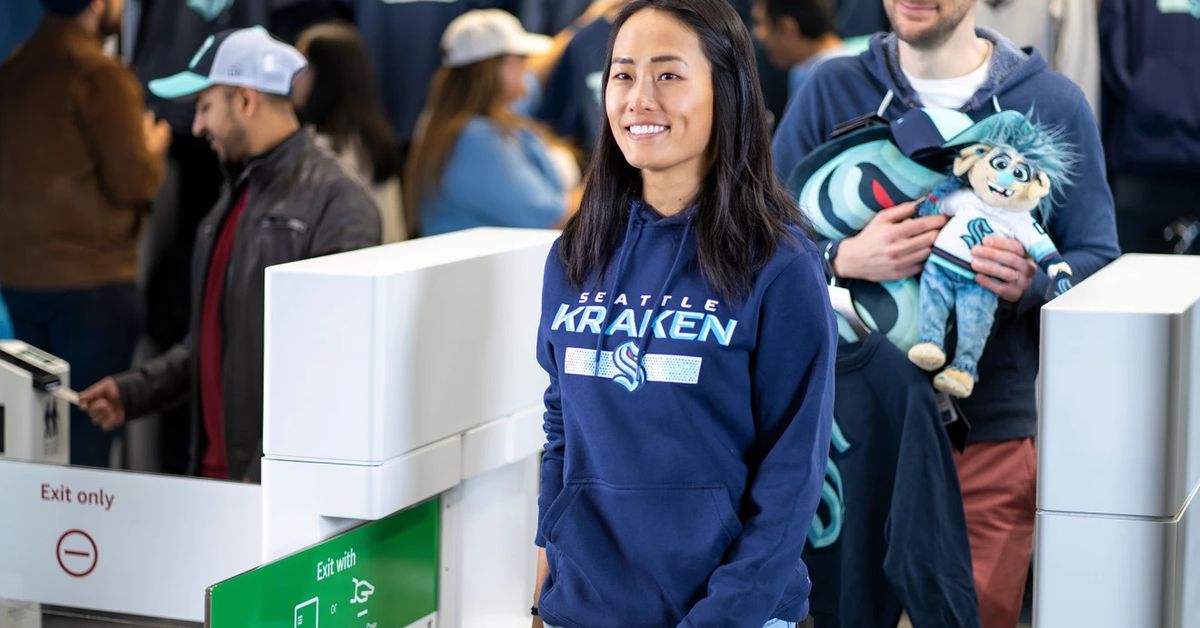The system is pretty straightforward: each item, in this case mostly clothing, gets an RFID tag that looks like a normal clothing tag. Customers come into the store, pick out what they want, and walk through an “exit gate” that scans the tags and tallies up the bill.
RFID protected bags 🔥🔥🔥
Note as well sometimes these scanners miss things even when not abused. E.g. I checked out at a sporting goods store where you dump all your purchases in a box which is then scanned. Got home and noticed I was not charged for a bicycle lock. It had its packaging but I wonder if someone inadvertenly bent the rfid chip somehow.
We’ll probably see people walking around Amazon shops bending the rfIDs back and forth as they shop to see if they can kill the tag. Some thieves will probably carry around hole punchers as well.
Is there an environmental cost to the tags? Just wondering. It’ll be most useful for things like supermarket checkouts, but the hassle of applying tags to FMCG products sounds like an absolute nightmare in labour.
Uniqlo here already does that, it’s quite magical when it happens.
So part of it is the tags are useful across the whole supply chain if used like that.
Didn’t walmart try this years ago?
carries RFID shielded bag
I see two reported major issues
First, they made the product manufacturers include them on their own dime. I get the logic, have that manufacturer include adding them in their assembly line process. But as stated, this was an extra expense for a couple of reasons and at times made the product unprofitable.
The solution, to start, seems to be either adding them via a walmart processing center, or have a funds process where sellers could get walmart to refund the cost and share it. I guess the third option would be to raise all prices at walmart to ensure the cost was bulit into the product.
Second problem, data load. Compared to 2006, i think we are much better at large datsets these days both from a space and processing power perspective. Datacenters in 2006 were often on-prem with upgrades to size having large and expensive lead times. AWS changed that and Amazon owns that, so i expect that bottle neck to be solvable.
There’s at least one additional issue, and I think it’s something Walmart ran into when trying the RFID for checkout and it’s the noisy radio environment which led to issues scanning all of the codes properly or including other people’s items as one of your purchases if it’s too close (eg. the self checkout counters being close by or shopping with a friend/partner who is behind you.)
Yea, that does sound like breaking problem. I have no clue how to begin solving that one.
I feel like there was an idea, not in this article, where people would scan items as they add them to their cart and then this walkout process was really just a redundant verification of walking out with the purchase. Still, that does sound like a lot of error prone noise.
I don’t know what’s been tried in a real retail market, but I remember Walmart or perhaps just designers trying all sorts of ideas from carts that scanned them to people using their phones. It starts to get really complicated when people want to remove things or you have multiple people putting stuff in carts (eg. children sneaking items in)
I’m sure it’s solvable, it’s just a question of whether it’s worth the cost for shoppers and the stores.
There’s another challenge that the self-checkout poses where people cover the UPCs with UPCs for cheaper items (either self printed, or by taking off stickers from cheaper items). Most of these RFID things are also stickers so that also becomes a problem.
I’m a bit baffled that #Amazon would give up the opportunity to scan faces. If you have a married couple with joint card account, Amazon wouldn’t know which one of them made the purchase without cameras.
Doesn’t this also mean they need a human to monitor for people who don’t scan their payment card?
I wonder if they just check the phone data. I assume most amazon customers have the app setup with location sharing. Not all, but most.
If we consider the sick amount of data harvesting Amazon does with cameras-- the fact that they even monitor the mood of Amazon drivers using cameras, it’s just hard to get my head around them giving that up with customers. You would expect cameras to have full coverage for theft and to monitor the mood of the shoppers. IIRC, Walmart had an initiative to monitor the moods of consumers as they looked at various products, signs, promos, etc.
I’m betting this idea blows over and in the end all Amazon shops will be fully video surveilled.
Yea, i think your video surveillance case has a lot of value. With AI Algorithms these days and the postive feedback loop being clearly a purchase, it would be weird not to have this.
This is the best summary I could come up with:
It built a system that uses radio-frequency identification, known as RFID, to track your purchases as you leave the store.
Customers come into the store, pick out what they want, and walk through an “exit gate” that scans the tags and tallies up the bill.
RFID tags are a longtime staple of the people- and thing-tracking industries: they’re a handy way to quickly check inventory in a warehouse, keep your luggage from getting lost, and even get you into Disney World.
It may not feel quite as cool to go through a scanner before you leave as it does to just walk out of the building, but the pitch for Amazon here is that an RFID system will be drastically easier for companies to implement.
Amazon says its Just Walk Out testing has shown huge increases in customer traffic thanks to the shorter lines and many more transactions because the process is so simple.
Amazon itself may be pulling back on physical retail stores, but it’s clearly still invested in real-world shopping logistics problems.
The original article contains 417 words, the summary contains 174 words. Saved 58%. I’m a bot and I’m open source!
Until I can use a full size grocery cart, it’s a non starter. Being only able to use that small little thing is worthless unless you do you shopping twice a week.
In the Suburbs or Rural areas sure, but in cities without cars or where you park a long way away from home nobody is filling up a cart. This makes sense for the latter.
I mean then they should place them there. Springfield, VA ain’t exactly Urban 🤷♂️






